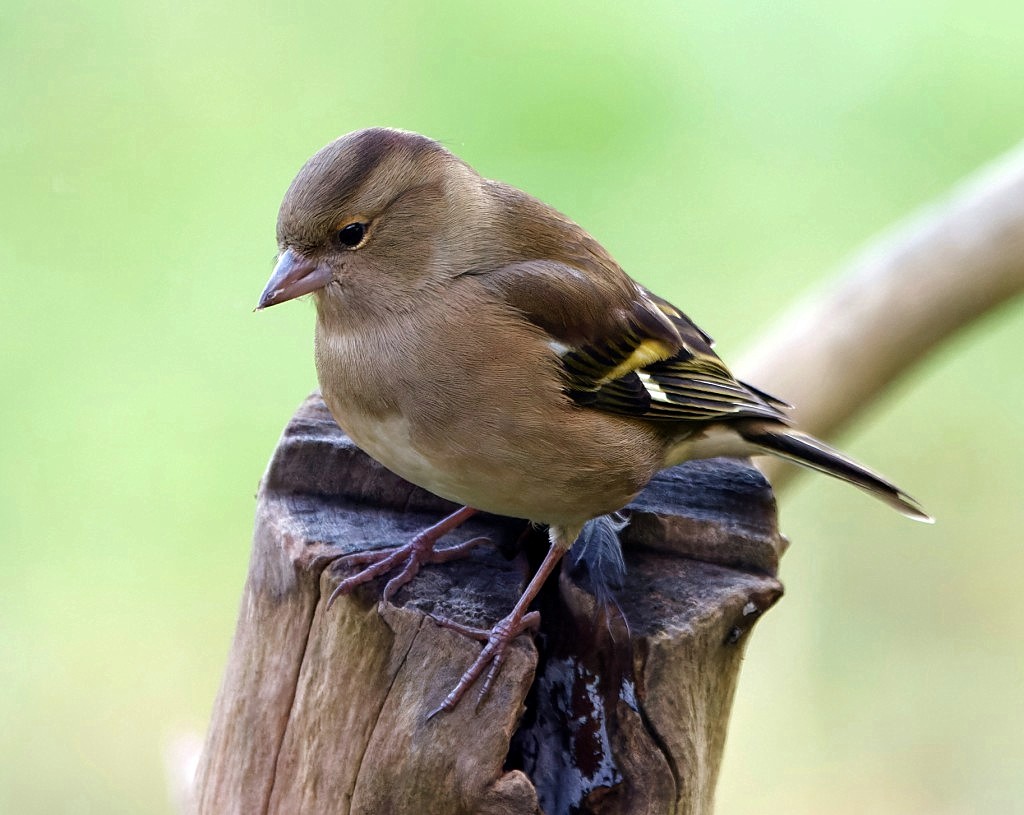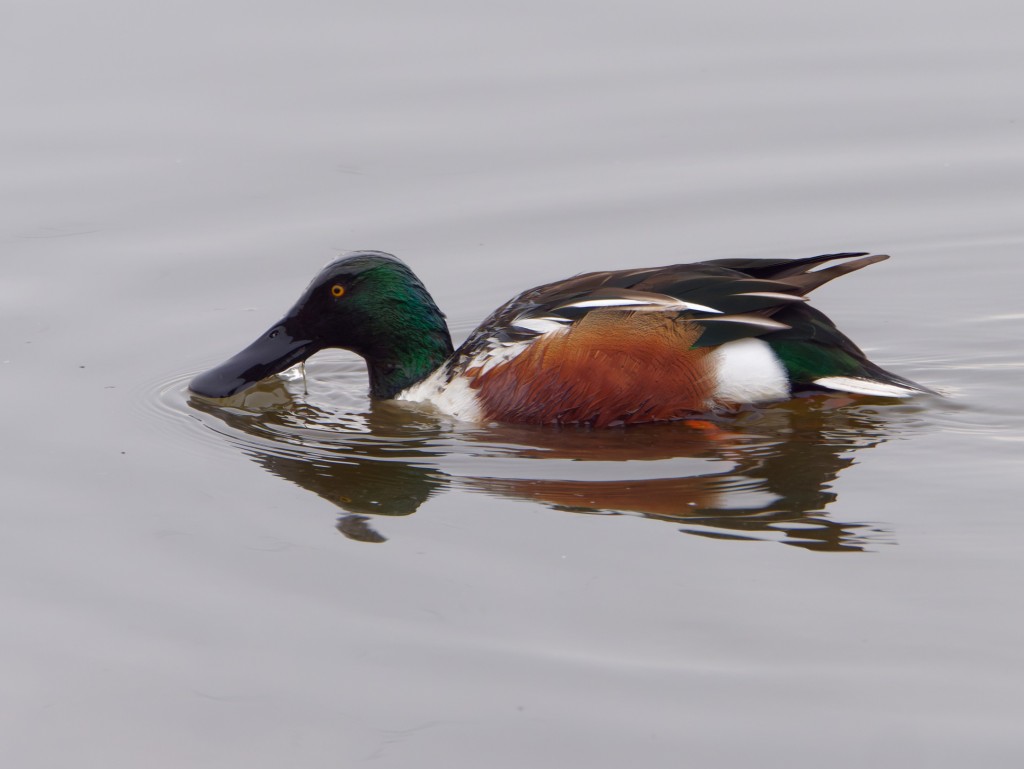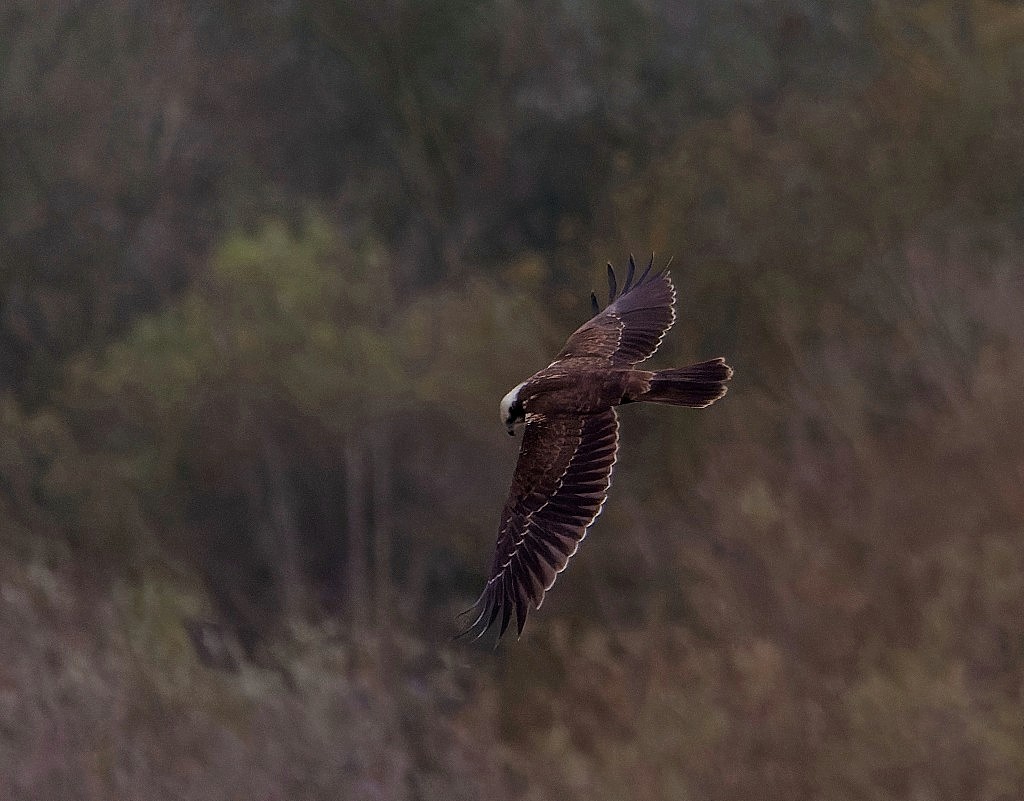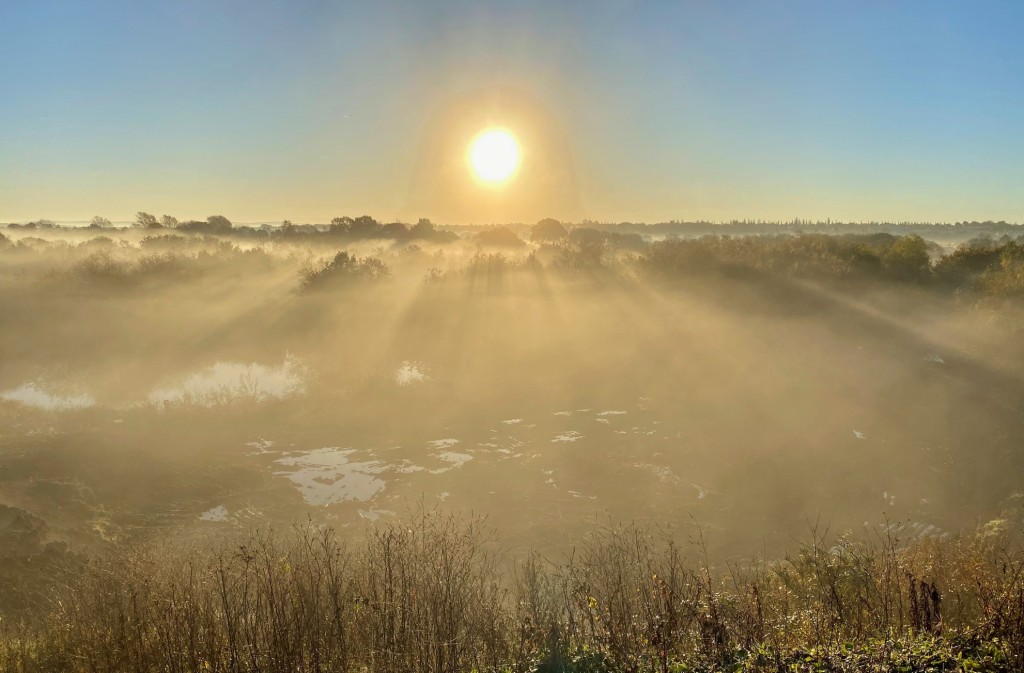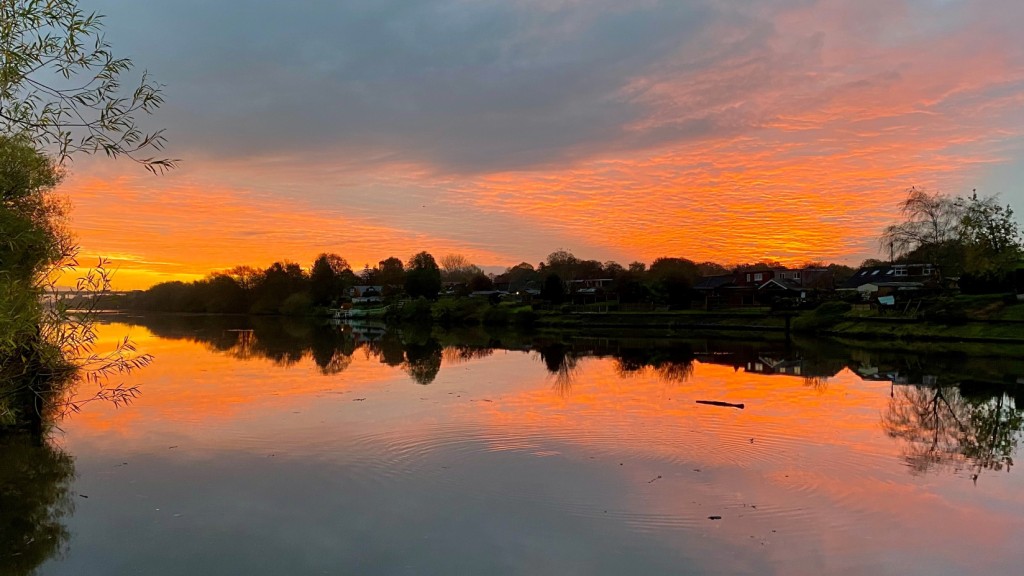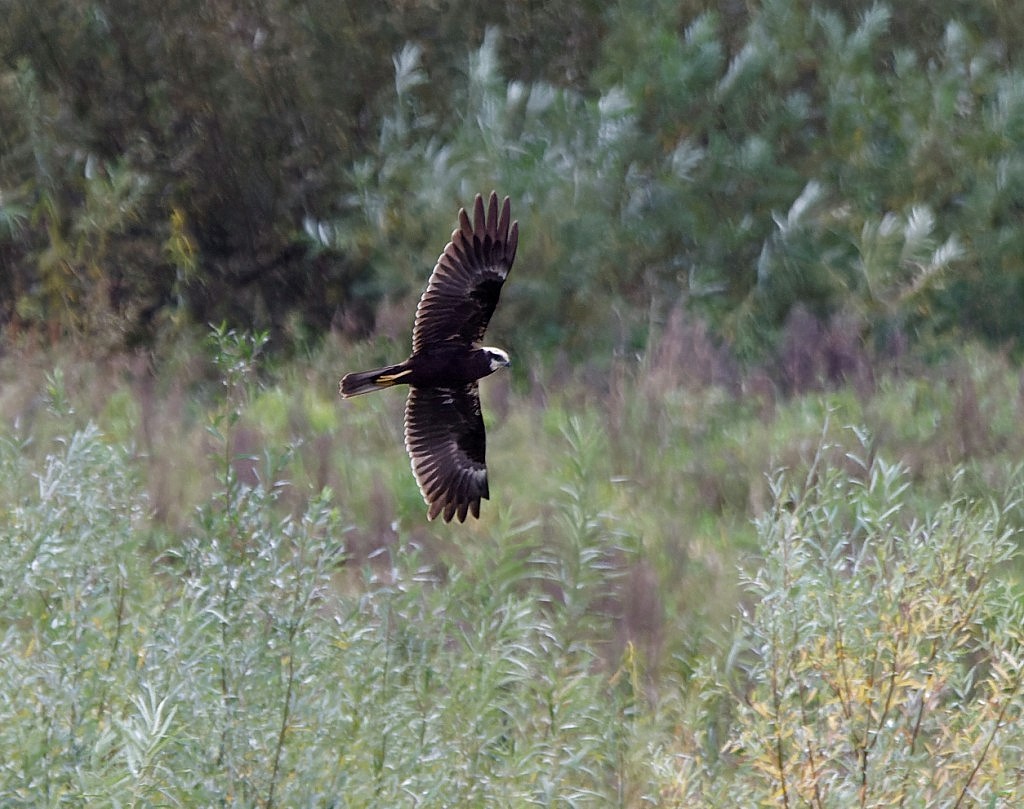Woolston Eyes Monthly Sightings
2023-11-30
Another beautiful morning, with a hard frost and a bright, waning gibbous moon at dawn. A nice surprise, too, made the early rise worthwhile. I started on No.3 bed but the lagoon was frozen solid, so headed over to No.4 bed and settled on the viewing platform to count the wildfowl which were working hard to keep a small pool open on each of the cells, including: 240 Coot, 70 Shoveler, 48 Gadwall and 100 Teal. I was just having my first swig of coffee when 2 Ring-necked Parakeets flew past, followed by 9 Waxwings, which came over my shoulder, making a beeline for Warrington Town centre. Waxwings are Starling-shaped birds, which breed in northern and eastern Europe. They can visit the UK in high numbers in some winters if the berry crop is poor on the continent, as has been the case this year with flocks of over 1,000 reported from Scotland. The first few are now being reported in Cheshire, so this sighting wasn’t too surprising, though we’ve only had a handful of records in more than forty years. I then spent the rest of the morning checking the berry-laden Holly trees to the north of No.2 bed to see if I could find any more but had to be content with 120 Redwings feeding voraciously on the berry crop. As a footnote, this afternoon 3 Waxwings were reported from Battersby Lane in Warrington, a regular feeding site during “Waxwing winters”. Photo of a female Chaffinch. Cheers David
Submitted by: David Bowman
2023-11-24
Yesterday was characterised by a strong, blustery westerly wind, conditions which can some times bring in the odd seabird. Such was the case on No.4 bed, where two Scaup, male and a female juveniles, were with a few hundred Tufted Ducks. Scaup are sea ducks, which at first glance resemble more heavily built Tufted Ducks. A few thousand winter around the coast of the UK when they are an uncommon visitor to inland wetlands. Also of note on the bed were a single Water Pipit and two Goldeneye. Over on No.3 bed, the entertainment was provided by three juvenile Marsh Harriers, which were constantly interacting between bouts of hunting. The link is to a short video showing the harriers, as well as a pair of the hundreds of Teal present. https://youtu.be/vS4g-VQ6YWo Cheers David Bowman (with Dan Owen)
Submitted by: David Bowman
2023-11-19
Yesterday we undertook the monthly Wetland Birds Survey (WeBS). Dan and I covered beds 1 and 4, while other wardens surveyed the remaining two beds. As ever, when you’re walking more than seven miles counting our wetland birds, you find some other nice things along the way. These included a Water Pipit among 45 Meadow Pipits, a couple of Stonechats, 1 Marsh Harrier, 6 Chiffchaffs and 8 Cetti’s Warblers. Highlights of the 4,394 birds of 28 species counted on the WeBS were: 1 Woodcock, 6 Jack Snipe, 4 Common Snipe, 2,000 Pink-footed Geese, 3 Kingfishers, 8 Water Rails, 92 Shovelers, 399 Tufted Ducks, 153 Gadwall, 118 Mallard, 5 Wigeon, 195 Coot and 10 Little Grebes. Photo of a drake Shoveler Cheers David Bowman (with Dan Owen)
Submitted by: David Bowman
2023-11-14
As autumn moves steadily towards winter, there is less visible migration, particularly as most of the winter thrushes have now moved through. We still managed to find a good range of species, though, with some crossover of summer migrants and winter visitors, represented by six Chiffchaffs and our first Goldeneye and Woodcock of the year. Other notable sightings included: 2 Stonechats, 1 Brambling, 2 Ravens, 8 Cetti’s Warblers, 2 Willow Tits, 4 Water Rails, 65 Lesser Redpolls, a handful each of Fieldfares and Redwings and 3 Marsh Harriers floating around No.3 bed, disturbing all the wildfowl. The morning finished in bright sunshine, which brought late sightings of Common Darter and Small Tortoiseshell. Cheers David Bowman (with Dan Owen)
Submitted by: David Bowman
2023-11-11
It’s been a good few days for variety. On Thursday morning sharp-eared Dan Owen heard a Firecrest calling near the entrance to No.4 bed and managed to record the call in support of the record. They are a rare visitor to the Reserve, so an nice addition to our year list. Additional sightings included: 5 Chiffchaffs, 3 Stonechats, 1 Brambling, 73 Fieldfares, 55 Redwings, 11 Lesser Redpolls, 1 Willow Tit and 2 Marsh Harriers. This morning’s clear blue skies then tempted us to undertake a visible migration session from the Elevated Pools on No.1 bed. It was well worth the effort, with the main movements being: 1,995 Pink-footed Geese, 1,300 Woodpigeons and 66 Fieldfares. Other more local sightings included: 2 Yellowhammers, 8 Jack Snipe and 11 Common Snipe. In addition, a hunting Peregrine flushed 2 Golden Plovers (another uncommon visitor to the Reserve) and 650 Lapwings from fields to the south before emerging from the milling flock with a Lapwing in its talons. The morning ended on a high note with a Red Kite drifting southwards, a long way east of our position. Photo of the sun rising over No.1 bed Cheers David Bowman (with Dan Owen, Helen Wynn and Brian Baird)
Submitted by: David Bowman
2023-11-04
This morning we managed to get two dry hours, right after dawn, before the rain set in. The cold northerly wind triggered the best migration of the autumn so far and we finished with totals of: 7,000 Woodpigeons, 1,660 Fieldfares, 580 Redwings, 370 Pink-footed Geese, 2 Bramblings, 55 Redpolls and 8 Siskins. These large autumn movements of Woodpigeons often involve Scandinavian birds, which are heading for the Iberian Cork Oak forests where they spend the winter feasting on the acorn crop. The winter thrushes also hail from Fenno-Scandia and arrive to escape the harsh winter and to take advantage of of the fruit and berry crops in the UK. The Reserve is a rich feeding area, as far as the latter is concerned, as it contains miles of Hawthorn hedges packed with haws. By mid-December the hedges will be bare and the thrushes will have moved on, many continuing on as far as Ireland. Photo of the Ship Canal at dawn. Cheers David Bowman (with Dan Owen, Helen Wynn and Brian Baird)
Submitted by: David Bowman
2023-11-03
So far this autumn we’ve rarely encountered ideal conditions for observing visible migration, with only moderate counts of passing Redwings, Fieldfares, Pink-footed Geese and Woodpigeons. It looked like more of the same yesterday morning, with blustery rain forecast from dawn onwards. In the event, the combination of a light northerly and cloud cover which gradually turned to patchy blue sky produced some decent counts from the viewing platform on No.4 bed. Highlights were: 3,000 Pink-footed Geese, 2 Black-tailed Godwits, 270 Redwings, 48 Fieldfares, 450 Woodpigeons, 500 Lapwings, a handful each of Lesser Redpolls, Meadow Pipits and Skylarks plus a single Siskin. Additional sightings from around the bed included: 1 Stonechat, 1 Willow Tit, 5 Snipe, 4 Chiffchaffs, 5 Cetti’s Warblers, 10 Goldcrests, 2 Water Rails and a hunting juvenile male Marsh Harrier (see photo) Cheers David Bowman (with Dan Owen)
Submitted by: David Bowman
2023-11-01
500 Pink footed Geese in fields between Lymm golf course and the river Bollin. On No.3 bed a female Marsh Harrier flushed about 100 Shoveler.
Submitted by: Dave Hackett

